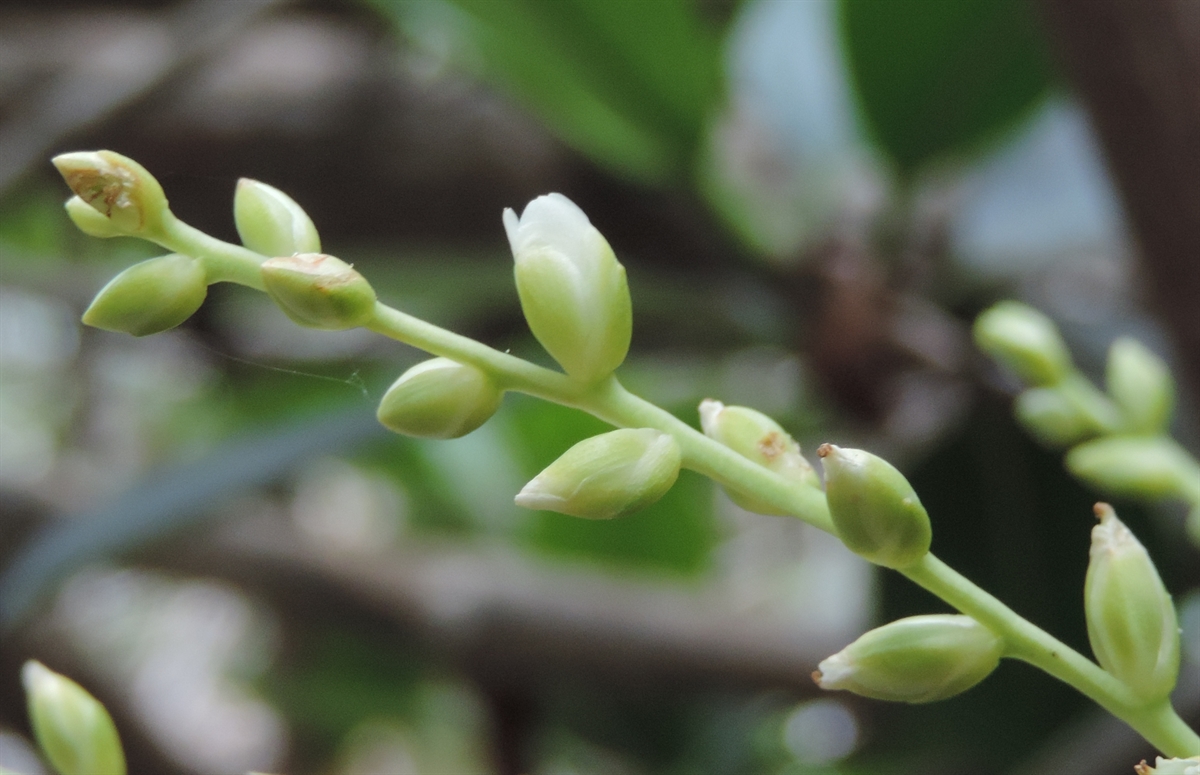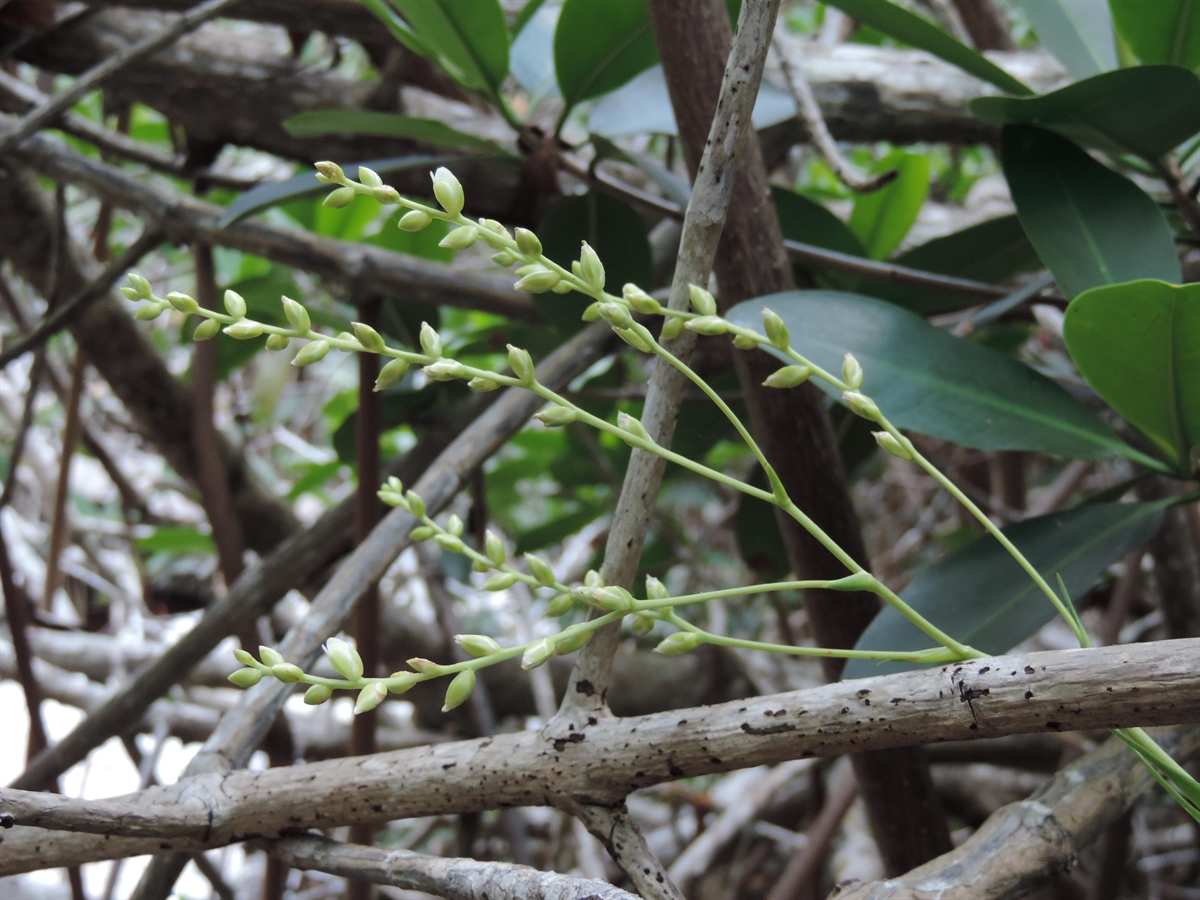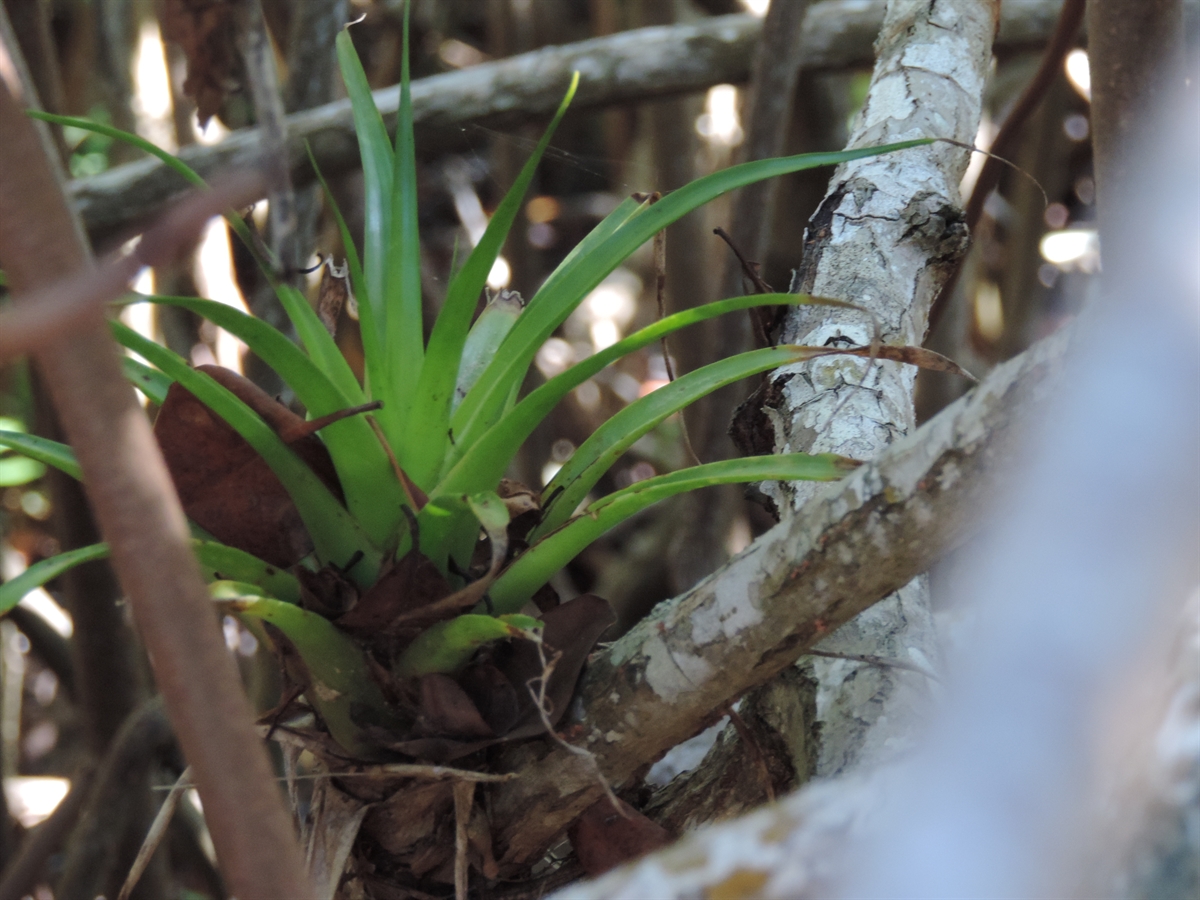Habit: Catopsis floribunda grows without discernible stems up to 50 cm (excluding inflorescence) in height. The light green leaves are in a rosette forming a series of cups at their base that can hold water and detritus. The leaves are parallel veined, lanceolate, to 3 cm wide at the base and 0.5 m in length.
The complete, perfect, actinomorphic flowers, each with a subtending bract, are arranged in a bipinnate-spike that is 2 – 4 times the length of the leaves. The lower bracts are leaf like while the upper are tightly appressed to the peduncle. There are 3 green unfused sepals in the calyx that exceed the length of the bracts. There are 3 green unfused petals in the corolla. There are 6 stamens that are shorter than the petals. The ovary is superior with 3 locules and numerous seeds. The fruit is a capsule that is equal in length to the sepals. Each seed has a tuft of hair to assist in dispersal.
Habitat: Catopsis floribunda grows as an epiphyte on trees and shrubs in very wet Dry Broadleaf Evergreen Formation – Forest (coppice).
Distribution: Catopsis floribunda is known to occur on Andros Island in the Lucayan Archipelago as well as Florida, the Caribbean region and Central America.
Medicinal/Cultural/Economic usage: Catopsis floribunda is not used medicinally in the Lucayan Archipelago.


